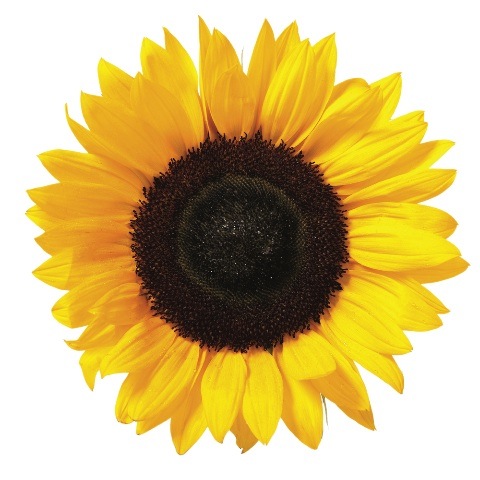Nancy and I don’t have any sunflowers this year. It’s depressing, but it is probably our own fault. We didn’t plant any. Of course, we haven’t planted any in about 10 years, and when we did, they often were shorter varieties or unusual colors.
Birds planted most of the sunflowers we have grown, dropping the seed. They sprouted in what we call our vegetable garden even though it has lots of flowers and we just let them grow.
Sunflowers are a hot product. In a week or two, you will see them at local farmers’ markets, a wonderful cut flower that brightens up a room with yellow, orange and red and stands out because of its size.
But they are also an industrial product. As alluded to above, they are a major component of birdseed. And if you have ever watched a baseball game, you have noticed that some players have to eat sunflowers and spit out the shells in order to perform properly.
The seeds can be pressed to produce oil, and I recently read a story in a Maine Organic Farmers and Gardeners publication about a farmer who grows sunflowers, presses them for the oil and feeds the remainder to his cattle.
But for most gardeners, sunflowers are grown for their looks. For us, they stand up tall in the vegetable garden, their faces following the sun from sunrise to sunset.
What probably got me ruminating on sunflowers was a press release I got a couple of weeks ago from Burpee, a nationwide seed chain. Burpee informed me that sunflowers are native to the Great Plains, were first cultivated by American Indians in the Southwest and Mississippi River Valley, and are being hybridized to fit into ornamental gardens.
It’s almost too late to plant sunflowers in your garden this year, although the Fedco catalog says some will develop in 60 days — which might be possible in southern Maine. But even if you don’t want to plant them now, it is not too late to notice them in gardens and buy them at farmers’ markets and farm stands. And you can make a note to order some next winter.
Next year, you can plant them outside after all danger of frost is past or a few weeks before under grow lights if you want to get a jump on the season.
Burpee was promoting four different types of sunflowers in its press release. A Sunflower Pristine Mix has five pollen-free varieties, so you can bring them inside without worrying about staining. Sunflower Elf grows only 16 inches tall and is good in containers and borders, is a bright yellow, and attracts butterflies.
The Sunflower Sunforest mix has plants that grow up to 15 feet tall and would be great for children to play in. And the Sunflower Super Snack Hybrid Mix grows 5 feet tall and has the classic yellow-gold color with a dark center and the largest, easiest-to-open seeds.
But Maine local seed companies also sell sunflowers.
Allen Sterling & Lothrop in Falmouth offers four varieties. Soroya grows 6 feet tall with several 20-inch branches per plants and has 4- to 6-inch blooms with tangerine petals. Russian grows 8 to 10 feet tall, is suitable for a screen, has large seed disks with golden yellow petals, and is usually grown as poultry feed.
Autumn Beauty is also multi-branching, has 8-inch flowers in bronze, yellow and purple (including some bicolors), and grows 5 feet tall. ASL’s dwarf is Sunspot, with a single yellow and brown flower on a sturdy 16-inch stem.
The Fedco catalog offers 20 varieties, including Vanilla Ice with almost-white petals growing on 5-foot stalks; Green Heart, a pollen-free variety with yellow blossoms with 4-inch lime green centers growing on a 5-foot stalk; and Ruby Eclipse, with ruby petals with lemon tips on 6-foot plants.
After writing this, I miss our sunflowers even more. I really wonder why we didn’t get any.
Tom Atwell can be contacted at 791-6362 or at:
tatwell@pressherald.com
Send questions/comments to the editors.



Success. Please wait for the page to reload. If the page does not reload within 5 seconds, please refresh the page.
Enter your email and password to access comments.
Hi, to comment on stories you must . This profile is in addition to your subscription and website login.
Already have a commenting profile? .
Invalid username/password.
Please check your email to confirm and complete your registration.
Only subscribers are eligible to post comments. Please subscribe or login first for digital access. Here’s why.
Use the form below to reset your password. When you've submitted your account email, we will send an email with a reset code.